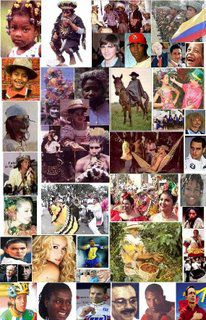British and Colombian people, similar or different, what do you think?
I. CULTURAL DO’S AND DON’TS
What is a British person famous for? Is it a stereotype?
Definitions:
A stereotype is a fixed idea that people have about what someone or something is like, especially an idea that is wrong. (Cambridge Dictionary).
A stereotype is "...a fixed, over generalised belief about a particular group or class of people.” (Cardwell, 1996). In other words stereotyping believes that people of a certain group, race or religion all have the same characteristics when they don't.
Some British stereotypes are:
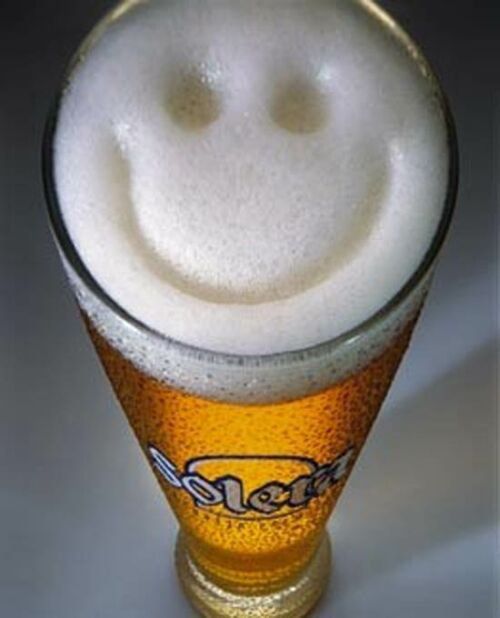 “Beer, honesty, Bulldog-type, Royal Family, Cricket, the Weather" - Dickie Bird (Famous English cricket umpire
“Beer, honesty, Bulldog-type, Royal Family, Cricket, the Weather" - Dickie Bird (Famous English cricket umpire
"Long shadows on county cricket grounds, warm beer, invincible green suburbs, dog lovers and old maids bicycling through the morning mist" - John Major (Ex Prime Minister )
“Cream teas, Big Ben, Shakespeare, pubs, beefeaters”
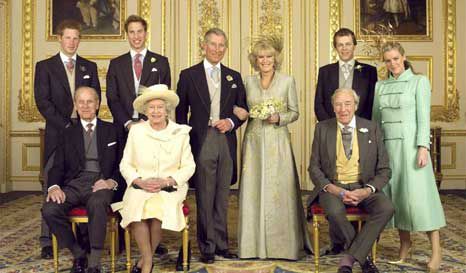 “Gardening, warm beer, stiff upper lip, double-decker buses, Morris dancing”
“Gardening, warm beer, stiff upper lip, double-decker buses, Morris dancing”
“Morris Dancing, Royal Family, Union Jack, God save the Queen, Battle of Britain, Trooping the Colour”
“Football, Hooligans, Beer, Fights in the street”
Some Colombian stereotypes are:
 “Colombia ... long known as the murder and kidnapping capital of the world and one of the globe's most dangerous places. The world's supplier of cocaine and overrun by drug traffickers, armed guerillas and paramilitaries.”
“Colombia ... long known as the murder and kidnapping capital of the world and one of the globe's most dangerous places. The world's supplier of cocaine and overrun by drug traffickers, armed guerillas and paramilitaries.”
“All the Colombians are drug trafficants, narco trafiker narco guerrillas”
Nevertheless, many foreigners who have overcome their fears and visited Colombia have had a pleasant surprise when they find a developed country with industries and vigorous people. When they come they are positively surprised; however, the greatest obstacle for them to decide to take the first step is precisely the world’s perception of Colombia, which is unbalanced compared to its reality.
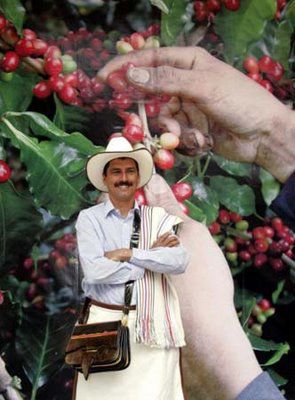 Another stereotypes are:
Another stereotypes are:
“Paisas inhabitants of Antioquia, perceived as wise entrepreneurs,
very social, much attached to family, traditions and religion.”
“Vallunos, people from the Cauca valley, very festive people, Cali the capital of salsa”
“Costeños, from the coasts of Colombia are happy and extroverted, considered as cool people and festive people. “
“Opitas, are very pacient people.”
“ Santandereanos are honest, peaceful and hard working.”
1. Will you find a disordered queue anywhere in England?
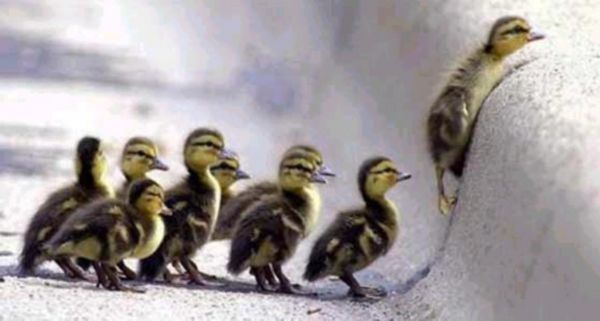 In England they like to form orderly queues (standing in line) and wait patiently for their turn e.g. boarding a bus. It is usual to queue when required, and expected that you will take your correct turn and not push in front. 'Queue jumping' is frowned upon.
In England they like to form orderly queues (standing in line) and wait patiently for their turn e.g. boarding a bus. It is usual to queue when required, and expected that you will take your correct turn and not push in front. 'Queue jumping' is frowned upon.
In Colombia, a large proportion of the population is orderly and respectful and like to queue. However, a minority is impatient and does not like to queue and as a result, congestion occurs at the entrances of theaters, stadiums and other events.
2. Is it important to say “please” and “thank you”?
It is very good manners to say "please" and "thank you". It is considered rude if you don't. You will notice in England that they say 'thank you' a lot.
In Colombia is similar. The most common expressions are: “please”, ”could you do me a favour”, “thank you”, “thank you very much”
3. Which side of the road do they drive in the U.K?
 In Britain, they drive on the left-hand side of the road, so the steering wheel is on the right. However the pedals are in the same position as in left-handed cars, with the accelerator (gas pedal) on the right. The gears and almost always the handbrake (parking brake) is operated with the left hand.
In Britain, they drive on the left-hand side of the road, so the steering wheel is on the right. However the pedals are in the same position as in left-handed cars, with the accelerator (gas pedal) on the right. The gears and almost always the handbrake (parking brake) is operated with the left hand.
On the contrary, in Colombia we drive on the right-hand side of the road, so the steering wheel is on the left. The three pedals are in the left side: clutch, break an accelerator. The gears and the handbrake are in the right side and are operated with the right hand.
4. Should you greet people with a kiss?
In Britain
Do not greet people with a kiss:
They only kiss people who are close friends and relatives.
 It is only when you meet friends, whom you haven't seen for a long time, which you would kiss the cheek of the opposite sex. In Britain one kiss is generally enough.
It is only when you meet friends, whom you haven't seen for a long time, which you would kiss the cheek of the opposite sex. In Britain one kiss is generally enough.
In Colombia between friends and relatives is very common kiss the cheek of the opposite sex. The women usually kiss each other in the right cheek.
5. Do English people talk loudly in public?
In Britain
Avoid talking loudly in public.
The people from regions like the North Coast, Santander, Valle del Cauca, Antioquia, etc.. normally talk loudly in public. The people of cities as Bogota avoid talking loudly in public.
6. What do you answer if somebody says “how do you do”?
In Britain
 Formal greetings
Formal greetings
The usual formal greeting is a 'How do you do?' and a firm handshake, but with a lighter touch between men and women.
‘How do you do?’ is a greeting not a question and the correct response is to repeat ‘How do you do?' You say this when shaking hands with someone.
First person "How do you do?"
Second person "How do you do?"
'How are you?' is a question and the most common and polite response is "I am fine thank you and you?"
First person "How are you?"
Second person "I am fine thank you and you?"
Nice to meet you – Nice to meet you too. (Often said whilst shaking hands)
Delighted to meet you– Delighted to meet you too.
Pleased to meet you – Pleased to meet you too. .
Glad to meet you - Glad to meet you too
Good Morning / Good Afternoon / Good Evening
Informal greetings
Hi - Hi or hello
Morning / Afternoon / Evening (We drop the word 'Good' in informal situations).
How's you? - Fine thanks. You?
Thank you / thanks / cheers
We sometime say 'cheers' instead of thank you. You may hear 'cheers' said instead of 'good bye', what we are really saying is 'thanks and bye'.
In Colombia
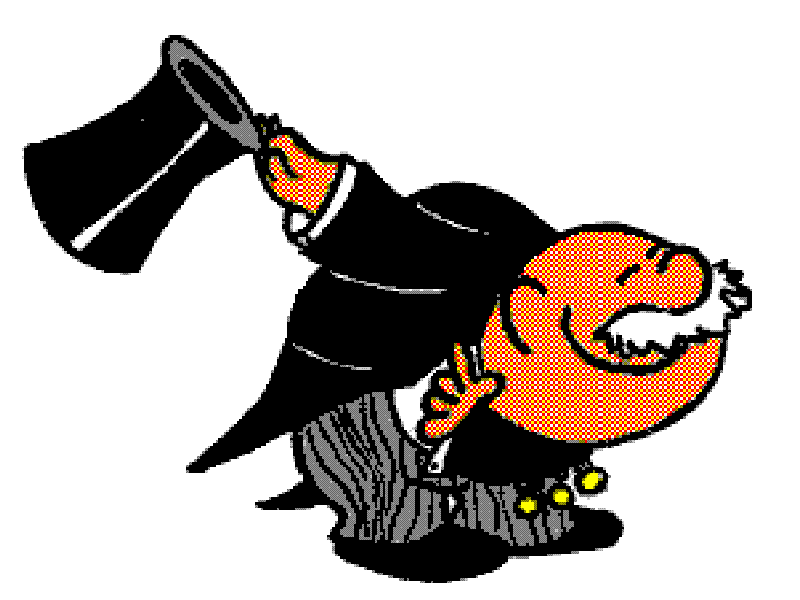 Men commonly shake hands with everyone when entering a home, greeting a group, or leaving. Women kiss each other on the cheek if they are acquainted but offer a verbal greeting or handshake otherwise.
Men commonly shake hands with everyone when entering a home, greeting a group, or leaving. Women kiss each other on the cheek if they are acquainted but offer a verbal greeting or handshake otherwise.
Close friends or relatives may greet each other with an abrazo (hug), sometimes accompanied by a kiss on the cheek. Colombians are very demonstrative.
In introductions, it is customary to address people by title (Señor, Señora, Doctor, etc.) rather than first name.
Common greetings include ¡Buenos días! (Good morning), ¡Buenas tardes! (Good afternoon), ¡Buenas noches! (Good evening), and ¿Cómo está? (How are you?). ¡Hasta luego! and, less formally, ¡Chao! and ¡Nos vemos! are popular parting phrases.
7. Are manners important in England?
The British are said to be reserved in manners, dress and speech. They are famous for their politeness, self-discipline and especially for their sense of humour. British people have a strong sense of humour which sometimes can be hard for foreigners to understand.
In Colombia
The manners and etiquette are about the same as everywhere else in the world.
Dressing. In Colombia we pay a lot of attention to appearance and clothing. Dress conservatively and be well groomed. Shoes are the first thing people notice. In Colombia we don’t wear tennis shoes unless we are playing tennis, jogging, etc.
We commonly express our faith with phrases like “Si Dios quiere” (God willing) and “Que sea lo que Dios quiera”.
Gesture. During conversation, we tend to be expressive with our hands and face, particularly if the discussion becomes animated or heated. Maintaining eye contact and standing close are important.
Visiting. While visiting is an important part of Colombian culture,
customs vary with ethnic group and region. Colombian hosts are gracious and attempt to make guests feel comfortable, usually offering refreshments such as coffee, fruit juice, or soft drinks.
Eating. Good manners and courtesy when eating are important
to Colombians. Pleasant conversation is welcome at the table, as it stimulates a feeling of goodwill. Many consider it important to keep hands above the table.
General Attitudes. Colombians take pride in their rich and diverse culture. The country’s various geographic regions, climates, and subcultures enrich its food, music, dance, and art.
Colombians are also proud of their “rumbero” spirit—their ability to both works and plays hard. The family is a great source of pride, and family solidarity and mutual support are important.
Colombians value honesty, loyalty, a good sense of humor, and education. They find selfishness, arrogance, and dishonesty distasteful.
Colombians may seem somewhat cynical and suspicious of outsiders. However, an initial lack of trust is more a survival skill than a lack of courtesy. Gaining someone’s trust often requires guarantees and manifestations of good faith. Colombians are proud of their history of democracy and independence.
8. Do British people arrive on time?
British people place considerable value on punctuality. If you agree to meet friends at three o'clock, you can bet that they'll be there just after three. Since Britons are so time conscious, the pace of life may seem very rushed. In Britain, people make great effort to arrive on time. It is often considered impolite to arrive even a few minutes late. If you are unable to keep an appointment, it is expected that you call the person you are meeting. Some general tips follow.
 You should arrive:
You should arrive:
* At the exact time specified – for dinner, lunch, or appointments with professors, doctors, and other professionals.
* Any time during the hours specified for teas, receptions, and cocktail parties.
* A few minutes early: for public meetings, plays, concerts, movies, sporting events, classes, church services, and weddings.
If you are invited to someone's house for dinner at half past seven, they will expect you to be there on the dot. An invitation might state "7.30 for 8", in which case you should arrive no later than 7.50. However, if an invitation says "sharp", you must arrive in plenty of time.
In Colombia.
Colombians are not notorious for punctuality. But come on time is essential to business appointments or social events.
9. What should you do if you receive an invitation saying RSVP?
Invitations
“ Drop in anytime” and “come see me soon” are idioms often used in social settings but seldom meant to be taken literally. It is wise to telephone before visiting someone at home. If you receive a written invitation to an event that says “RSVP”, you should respond to let the person who sent the invitation know whether or not you plan to attend.
Never accept an invitation unless you really plan to go. You may refuse by saying, “Thank you for inviting me, but I will not be able to come.” If, after accepting, you are unable to attend, be sure to tell those expecting you as far in advance as possible that you will not be there.
Although it is not necessarily expected that you give a gift to your host, it is considered polite to do so, especially if you have been invited for a meal. Flowers, chocolate, or a small gift are all appropriate. A thank-you note or telephone call after the visit is also considered polite and is an appropriate means to express your appreciation for the invitation.
In Colombia.
In Colombia is something similar. In particular, if you receive a written invitation to an event that says “RSVP”, you should respond to let the person who sent the invitation know whether or not you plan to attend.
It is considered polite if you have been invited for a meal; give a gift to your host as chocolates or flowers.
II. BRITAIN/U.K /ENGLAND. ETHNICAL DIVERSITY IN BRITAIN
Similarities and differences between two nations: United Kingdom and Colombia.
¿Why so many names?

Britain Great Britain British Isles U.K.
It's not very clear which is the reason to give different names to almost the same regions as well as they do in United Kingdom. If you want to refer to England and Wales, you won't name the countries but you'll say "Britain", if you want to add to Scotland to Britain then you'll say "Great Britain" and if you want to add Northern Ireland to this last batch then you'll say "United Kingdom".
What so strange thing. It's better to name the countries one by one or even better unite them all into one called "United Kingdom" which would also include the rest of Ireland and all other islands.
Throughout its history, Colombia has also had different names but each time has been a unique name. Today those old names aren't used and they're only remembered to study history.

New Kingdom of Great Colombia United States of Colombia
Granada Colombia
The first name given to what is the core of the present Republic of Colombia was "New Kingdom of Granada" or "New Granada", granted in the sixteenth century; later, between 1821 and 1831, it was given the name "Great Colombia" to an extinct and enormous state covering the territories of the modern Republic of Colombia, Venezuela, Ecuador and Panama and small portions of land which belong to Costa Rica, Peru, Brazil, Guyana and Nicaragua now; then it came the federal republic of "The United States of Colombia" composed in 1863 by the current countries of Colombia and Panama; finally it was formed the present "Republic of Colombia in 1886. Today our nation has only one name as it's usual to avoid confusion.
Oceans
Both Colombia and Unite Kingdom have oceans, seas and beaches, but while UK and the British Isles have their seaside on the north, south, east and west, Colombia has only it on the north and on the west. Moreover the UK is completely surrounded by the Atlantic Ocean while Colombia has coastline on both Atlantic and Pacific.
Multicultural countries
In the current Britain, Great Britain or United Kingdom there are people of different races, bringing their own culture. There, you may see people of blond, brown, red or black hair and white, brown, yellow or dark skin and green, black, brown, blue or black eyes. All of them are British but are very different. As in the current Britain, Great Britain or United Kingdom there are people of different races as a result of the first invasion and influx of refugees from other regions such as Caribbean, India, Hong Kong and elsewhere, Colombians are also the product of a mixture of races coming, first of, the Indians who inhabited our land, second, the Spanish conquistadors, third, African slaves, and finally, all immigrants who arrived from other countries in the past and continue arriving today to settle here.
London in 250 different languages are spoken. So many amounts of languages are the result of an exorbitant ethnic diversity. Not all inhabitants in London are of British origin; no matter they were born there. There are a large percentage of people whose nearby ancestors came from other countries. Therefore there are many different cultures, races, customs, and of course a variety of languages.
In the same way, our country, Colombia is rich in diversity, we speak Spanish, have 65 indigenous languages and we also have languages of African origin. There are tropical forests, deserts, plains and a broad geographical range which generates extremely diverse cultural conditions among regions. There are 44 million of ethnic origins Colombians.
Cultural diversity not only enriches our lives in countless ways, but also is an important source of identity and basic human rights. Cultural diversity is now the result of hundred of years of human interaction with nature and with people who have different customs, beliefs and lifestyles.
III. SYMBOLS OF ENGLAND AND COLOMBIA
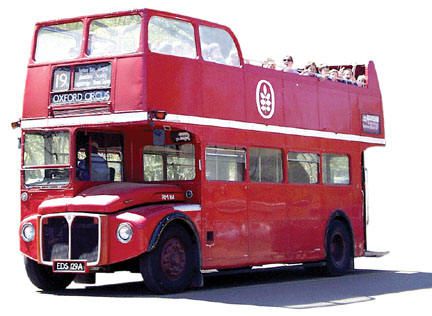 Cars
Cars
Double-deckers have become a symbol of the United Kingdom, in particular the use of the red double decker buses in London.
We can see the double-decker buses in many places around the world; we can find it in countries of Europe and Asia, for instance, in Germany, United Kingdom, Ireland, China, Hong Kong, Japan, also in Canada and United States. However, The RED double-decker buses are located mainly on United Kingdom, Sri Lanka and Republic of India.
On the other hand, 'El Yipao', is a Symbol of some regions in Colombia, like Armenia an Calarca, in the department of Quindío. It arrived there in 1946 for military purposes and they are very popular among colombian cofee farmers who saw in this vehicle the needed qualities for the difficult roads in the mountainous region of the country. Besides the transportation of coffee, Jeeps are used for transport many other agricultural products, as well as country workers to places previously accessible only to pack animals. Due to this quality, the Jeeps are also known locally in Spanish: "mulitas mecánicas" (or mechanical mules).
These vehicles are part of the culture; as many families engaged in the cultivation of coffee, so you get to customize their fond owners with ornaments and striking accessories that in many occasions including religious images. The understanding of these vehicles is such that the region is stated that all household of a peasant house, sometimes including their members, must be transported by a single Jeep.
Getting back to England, there is another very important symbol, the London Taxi. It looks like a classic, old car. However, it is a symbol of strength, safety and security. They are really robust, with a state of the art engine management system, smooth and comfortable ride. They have a black color, so they are powerfull, and recently lower-emissions car.
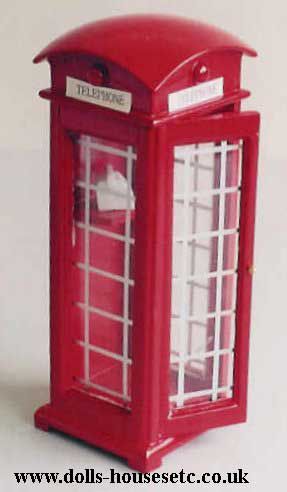 Telephone box
Telephone box
Here we found a big difference between Colombia and England, because in Colombia, neither the telephone box nor the post box are Symbols, and they doesn't have the same features around the country, but on England they really are symbols, and both the post box and telephone box are red, also they have a picture of a crown on them. The crown on the postbox also has the monarchs initials underneath. We have postboxes with VR (Victoria Regina) and GR (Georgeus Rex) still in use today. Victoria Regina is latin for Queen Victorian and Georgeus Rex is latin for King George.
Food and drink
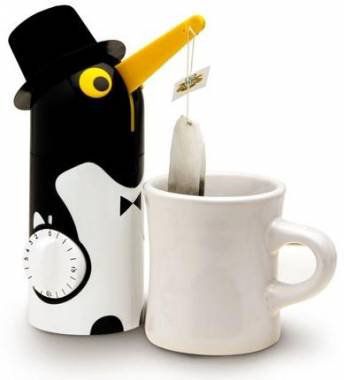 The British are known for their politeness, manners and etiquette. They are also known for their fish and chips, bangers and mash and Yorkshire pudding. And of course, what would a meal be without that famous tea? British food is not spicy, hot or sweet.
The British are known for their politeness, manners and etiquette. They are also known for their fish and chips, bangers and mash and Yorkshire pudding. And of course, what would a meal be without that famous tea? British food is not spicy, hot or sweet.
Britain is a tea-drinking nation. Every day english people drink 165 million cups of the stuff and each year around 144 thousand tons of tea are imported. Tea in Britain is traditionally brewed in a warmed china teapot, adding one spoonful of tea per person and one for the pot. Most Britons like their tea strong and dark, but with a lot of milk.
On the other hand, staple foods of Britain are meat, fish, potatoes, flour, butter and eggs. Many of their dishes are based on these foods. A typical British meal features a meat and two vegetables. The meats are beef, lamb, fish, chicken or pork. One vegetable is usually potatoes and the other may be carrots, peas, cabbage or onions. Hot gravy is poured over the meat and vegetables. The Sunday meal will consist of roast meat, three vegetables and pudding.
Fish and chips is British "take away" food (or as we know it, "takeout"). Fish and chips is not a dish cooked at home. It is meant to be take away food. The fish is cod, haddock, huss or plaice, which is deep fried in a batter. The chips are actually French fries. Malt vinegar and salt covers the food.
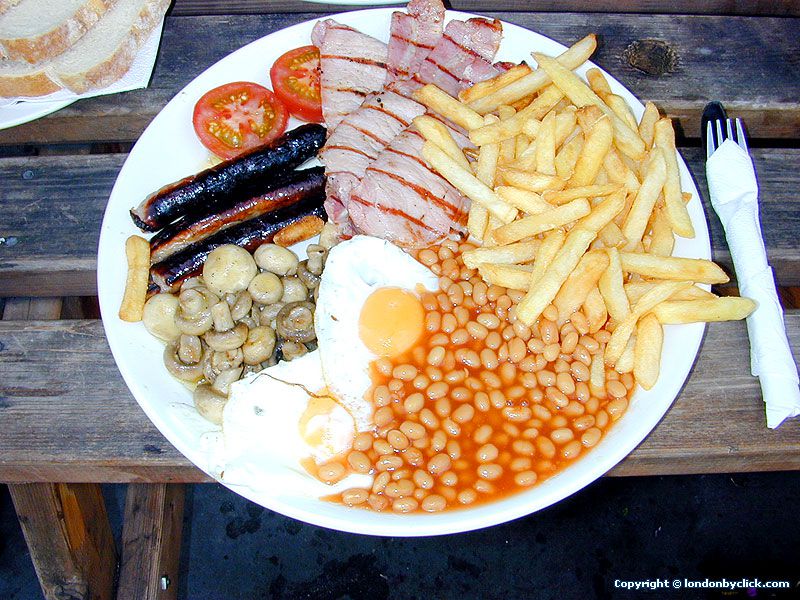 The British have some interesting names for some of their dishes. Leftovers are often fried to produce a dish called "bubbles and squeaks." The name comes from the sounds of the food while cooking. The dish is made from leftover vegetables, leftover meat and mashed potatoes . The vegetables and meat are chopped and placed in a frying pan with mashed potatoes. The food is mixed together and fried until brown on both sides. Another strange name is Toad-in-a-Hole. This is sausages covered in batter and baked.
The British have some interesting names for some of their dishes. Leftovers are often fried to produce a dish called "bubbles and squeaks." The name comes from the sounds of the food while cooking. The dish is made from leftover vegetables, leftover meat and mashed potatoes . The vegetables and meat are chopped and placed in a frying pan with mashed potatoes. The food is mixed together and fried until brown on both sides. Another strange name is Toad-in-a-Hole. This is sausages covered in batter and baked.
British food is hearty food meant to be eaten when it's cold and rainy, so many of the traditional meals are comfort foods. The dishes are served warm and plentifully. One comfort meal is bangers and mash, which is sausage and mashed potatoes. Another comfort food is shepherd's pie, which is minced lamb and vegetables topped with mashed potato.
In contrast, Colombian food is characterized by its blending of European cuisine with aspects of African and indigenous cuisine.Even though there is no consensus as to which one dish can be considered the true “national dish,” the arepa and sancocho can be considered excellent candidates. Other well-known regional dishes include the bandeja paisa, ajiaco, the lechona Tolimense, the mote de queso and cuchuco.
Colombia is not a paradise for vegetarians as the Colombian diet includes a lot of meat. In the coastal areas you will find a good variety of fish, lobster and seafood often prepared with a sauce made out of coconut milk. The offer of fresh fruit is overwhelming and many of the varieties you have probably never heard of before.
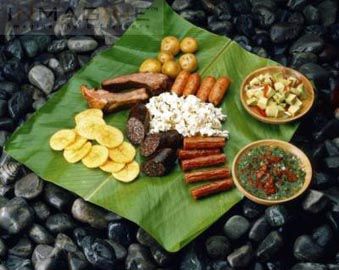 Fritanga is a set of dishes that can be likened to barbecue. It is enjoyed throughout the entire country. Fritanga usually includes grilled beef and chicken, pigs feet, leg of lamb, ribs, and sausage such as morcilla , chorizo, longaniza and chunchullo (fried cow intestines) accompanied by mini potatoes and arepas made of choclo (sweet corn).
Fritanga is a set of dishes that can be likened to barbecue. It is enjoyed throughout the entire country. Fritanga usually includes grilled beef and chicken, pigs feet, leg of lamb, ribs, and sausage such as morcilla , chorizo, longaniza and chunchullo (fried cow intestines) accompanied by mini potatoes and arepas made of choclo (sweet corn).
Staples of the Colombian diet include tubers such as potatoes and cassava, along with meat such as beef, chicken, pork, or fish. Grains such as corn and rice are widely consumed. The plantain is an important element of the Colombian diet, as are vegetables such as onion, garlic, pepper, and tomato. Legumes such as beans, peas, and lentils are eaten very frequently.
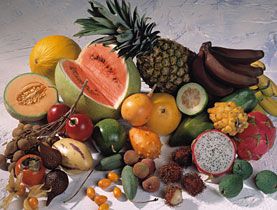 A myriad of fruit species grow in Colombia, and many fruits considered “exotic” commonly grow in Colombian forests and in the countryside. The climate and geography favor a great variety of crops, as well as a great variety of both freshwater and saltwater fish.
A myriad of fruit species grow in Colombia, and many fruits considered “exotic” commonly grow in Colombian forests and in the countryside. The climate and geography favor a great variety of crops, as well as a great variety of both freshwater and saltwater fish.
National game
A national sport is a sport or game that is considered to be a culturally intrinsic part of a country or nation. In American English the term national pastime is often used. Although there are normally no official parameters towards defining what is a national sport, there are some general characteristics that most national sports share:
The rules and objectives of the sport or game are known in fairly great detail in the country or nation.
The game or sport is widely played or watched in the country or nation.
The game or sport has a long history of popularity or extreme current popularity in the country or nation.
In some countries, sport or game can become the official national pastime by mandate of the government, such as with Canada and lacrosse in 1859.
In other countries, where the sport or game has such a long history, such as with baseball in the United States or sumo wrestling in Japan, the sport or game is often considered a de facto "official" national pastime.
 England - Football (soccer) is the most popular in United Kingdom. Cricket, Rugby Union and Rugby League, are also popular.
England - Football (soccer) is the most popular in United Kingdom. Cricket, Rugby Union and Rugby League, are also popular.
The English national football team represents England in international football and is controlled by The Football Association, the governing body for football in England. Although most national teams worldwide represent an independent state, the four home nations which form the United Kingdom are each represented separately in international tournaments. England is one of the more successful footballing teams, being one of only seven countries to ever win the FIFA World Cup, which they did in 1966 when they hosted the finals. They defeated West Germany 4-2 in extra time in the Final. England share with France the record of having one World Cup victory and this being achieved on home soil (the other winners have all won the trophy at least twice and at least once on foreign soil). Since then they have only reached the semi-finals once, losing to West Germany on penalties. Nevertheless, they remain a prominent team on the global stage, rarely dropping outside of the top ten rankings of FIFA. England also reached the semi-finals of the UEFA European Championship in 1968 and 1996 (again played in England). They were the most successful of the Home Nations in the British Home Championship with 54 wins (including 20 shared wins) before the competition was suspended in 1984.
Traditionally, England's greatest rivals have been Scotland, who were their opponents in the first-ever international football match in 1870. Since regular fixtures against Scotland came to an end in the late 1980s, other rivalries have become more prominent.Matches with Argentina and Germany have produced particularly eventful encounters. England's home ground is Wembley Stadium in London.
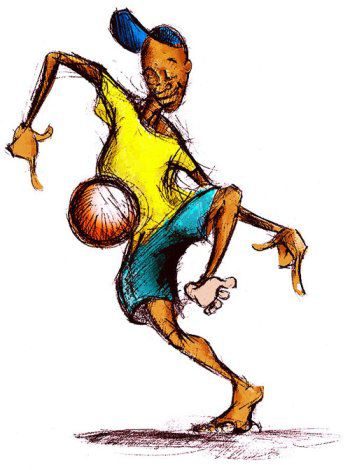 On the other hand, colombians are passionate about football (soccer) with fierce regional competitiveness that leads to highly emotional matches between rivals. The Colombia Football Federation (Federación Colombiana de Fútbol) is the national game’s governing body, dating back to 1924. It has been affiliated to FIFA since 1936 and is a member of CONMEBOL (Confederación Sudamericana de Fútbol). Professional football in Colombia was established in 1948 by DIMAYOR, now the Asociación de Clubes del Fútbol Profesional Colombiano. Today football is a national pastime with high levels of support from fans on a local and national level. Known as Los Cafeteros, Colombia’s home-grown football talent includes the skilful past heroes of Willington Ortiz and René Higuita, who shone in the 1970s and ’80s. Other great idols include Jorge Bermúdez, Iván Valenciano, Freddy Rincón and the wild-haired Carlos Alberto Valderrama Palacio. In 2007, a five-year-old boy from Barranquilla was hailed a football genius.
On the other hand, colombians are passionate about football (soccer) with fierce regional competitiveness that leads to highly emotional matches between rivals. The Colombia Football Federation (Federación Colombiana de Fútbol) is the national game’s governing body, dating back to 1924. It has been affiliated to FIFA since 1936 and is a member of CONMEBOL (Confederación Sudamericana de Fútbol). Professional football in Colombia was established in 1948 by DIMAYOR, now the Asociación de Clubes del Fútbol Profesional Colombiano. Today football is a national pastime with high levels of support from fans on a local and national level. Known as Los Cafeteros, Colombia’s home-grown football talent includes the skilful past heroes of Willington Ortiz and René Higuita, who shone in the 1970s and ’80s. Other great idols include Jorge Bermúdez, Iván Valenciano, Freddy Rincón and the wild-haired Carlos Alberto Valderrama Palacio. In 2007, a five-year-old boy from Barranquilla was hailed a football genius.
National floral emblem
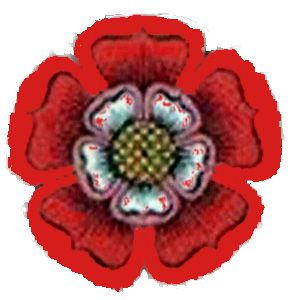 The Tudor rose is the national floral emblem of England, and was adopted as a national emblem of England around the time of the Wars of the Roses. The rose is used in a variety of contexts in its use for England's representation. The Rose of England is a Royal Badge, and is a Tudor, or half-red-half-white rose, symbolising the end of the Wars of the Roses and the subsequent marriage between the House of Lancaster and the House of York. This symbolism is reflected in the Royal coat of arms of the United Kingdom and the crest of the FA.
The Tudor rose is the national floral emblem of England, and was adopted as a national emblem of England around the time of the Wars of the Roses. The rose is used in a variety of contexts in its use for England's representation. The Rose of England is a Royal Badge, and is a Tudor, or half-red-half-white rose, symbolising the end of the Wars of the Roses and the subsequent marriage between the House of Lancaster and the House of York. This symbolism is reflected in the Royal coat of arms of the United Kingdom and the crest of the FA.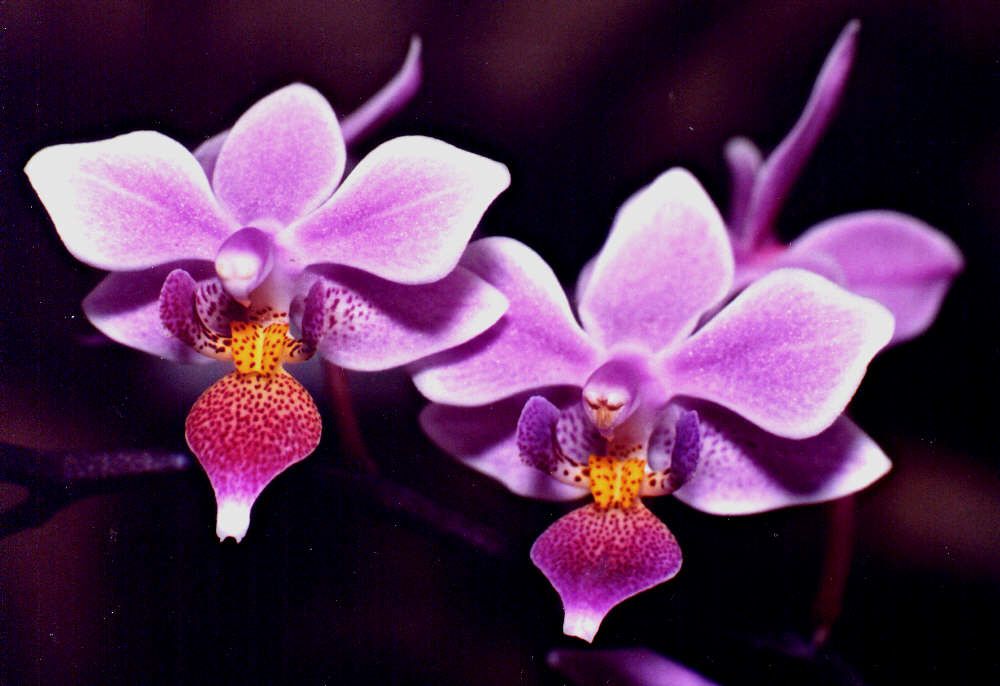 However, the rose of England is often displayed as a red rose (which also symbolises Lancashire), such as the badge of the England national rugby union team. A white rose (which also symbolises Yorkshire) is also used on different occasions.
However, the rose of England is often displayed as a red rose (which also symbolises Lancashire), such as the badge of the England national rugby union team. A white rose (which also symbolises Yorkshire) is also used on different occasions.
In Colombia, Orchid is the national flower. The orchid grows in the forest area of the Andes. The orchids grown in Colombia are among the most beautiful orchids of the world.
PUBS
Its short for a public house which used to be a stop for carriages where the passengers could rest and get refreshment and was open to all as apposed to a private members club which had criteria as to whom could be admitted. This is an abbreviation of the word Public, from the full title Public House.
A public house, the formal name for a pub in Britain, is a drinking establishment licensed to serve alcoholic drinks for consumption on or off the premises in countries and regions of British influence. Although the terms often have different connotations, there is little definitive difference between pubs, bars, inns, taverns and lounges where alcohol is served commercially. A pub that offers lodging may be called an inn or (more recently) hotel in the UK. Today many pubs in the UK, Canada and Australia with the word "inn" or "hotel" in their name no longer offer accommodation, or in some cases have never done so. Some pubs bear the name of "hotel" because they are in countries where stringent anti-drinking laws were once in force. In Scotland until 1976, only hotels could serve alcohol on Sundays.
There are approximately 57,500 public houses in the United Kingdom, with at least one in almost every city, town and village. In many places, especially in villages, a pub can be the focal point of the community, playing a complementary role to the local church in this respect. The writings of Samuel Pepys describe the pub as the heart of England and the church as its soul. Public houses are culturally and socially different from places such as cafés, bars, bierkellers and brewpubs.
Pubs are social places based on the sale and consumption of alcoholic beverages, and most public houses offer a range of beers, wines, spirits, alcopops and soft drinks. Many pubs are controlled by breweries, so beer is often better value than wines and spirits, while soft drinks can be almost as expensive. Beer served in a pub may be cask ale or keg beer. All pubs also have a range of non-alcoholic beverages available. Traditionally the windows of town pubs are of smoked or frosted glass so that the clientèle is obscured from the street. In the last twenty years in the UK and other countries there has been a move away from frosted glass towards clear glass, a trend that fits in with brighter interior décors.
Pubs often have traditional names. A very common name is the "Marquis of Granby". These pubs were named after John Manners, Marquess of Granby, who was the son of John Manners, 3rd Duke of Rutland) and a general in the 18th century British Army. He showed a great concern for the welfare of his men, and on their retirement, provided funds for many of them to establish taverns, which were subsequently named after him. The name may also have gained popularity because of the novel The Pickwick Papers. In that much-loved book, Charles Dickens depicted a character, Tony Weller, who was owner (by marriage) of a pub named The Marquis of Granby.
However, I think drinking in Colombia is much better than drinking in many other parts, and beer is the most popular beverage in Colombia.
Colombia's Major Brewery...
100 years ago there were several breweries in Colombia, but just like in much of the world, the industry shook out to a very small number of very large corporate brewing concerns. The quality plummeted as the quantity pumped out of mega-factories shot through the roof.
In Colombia, the one and only survivor by the early 2000s was Cerveceria Bavaria, which was, in turn, gobbled up by the South African bland beer producer, SABMiller (the world's largest mega industrial brewer). The company operates nine breweries (each with annual production capacities of up to 6.5 million hectoliters) throughout Colombia. All are extremely modern state-of-the art facilities --- even ones like their large, traditional brewery in Barranquilla, which is now a good 80 years old. The company has kept pace with modernization and industrial management techniques and has made extensive and constant investments in American and European industrial equipment and processes, as exemplified by their cutting edge Valle brewery, which is just now coming on line in southwest Colombia.
Sources:
IV. FOOD
Differences and similarities between British and Colombian Food
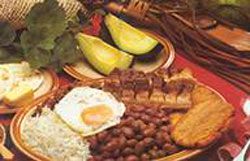 Colombian cuisine is diverse and varied depending on the regions of Colombia. In some areas you will find specialties like roasted ants or guinea pigs while in other areas Colombians wouldn’t even touch those dishes, but in some areas the arepa and sancocho can be considered excellent candidates. Other well-known regional dishes include the bandeja paisa, ajiaco, the lechona Tolimense, the mote de queso, and cuchuco. Instead of Brithis food has traditionally been based on beef, lamb, pork, chicken and fish and generally served with potatoes and one other vegetable.
Colombian cuisine is diverse and varied depending on the regions of Colombia. In some areas you will find specialties like roasted ants or guinea pigs while in other areas Colombians wouldn’t even touch those dishes, but in some areas the arepa and sancocho can be considered excellent candidates. Other well-known regional dishes include the bandeja paisa, ajiaco, the lechona Tolimense, the mote de queso, and cuchuco. Instead of Brithis food has traditionally been based on beef, lamb, pork, chicken and fish and generally served with potatoes and one other vegetable. 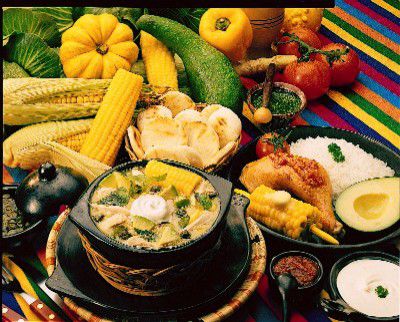
Fritanga is a set of dishes that are similar to barbecue. It is enjoyed throughout the entire country. Fritanga usually includes grilled beef and chicken, pigs feet, leg of lamb, ribs, and sausage such as morcilla, chorizo, longaniza, and chunchullo (fried cow intestines) accompanied by mini potatoes and arepas made of choclo (sweet corn).
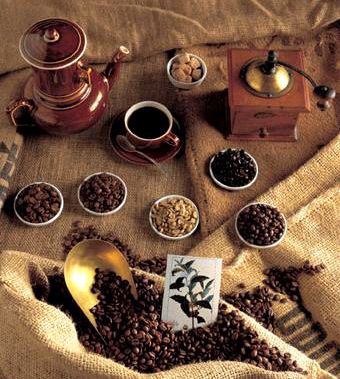 Colombia is also known world-wide for its exquisite coffee, which is considered to have a flavor unmatched by any other. The Colombian coffee is export to many countries in the world. England is a tea-drinking nation. Every day they drink 165 million cups of the stuff and each year around 144 thousand tons tea are imported.
Colombia is also known world-wide for its exquisite coffee, which is considered to have a flavor unmatched by any other. The Colombian coffee is export to many countries in the world. England is a tea-drinking nation. Every day they drink 165 million cups of the stuff and each year around 144 thousand tons tea are imported.
Tea in England is traditionally brewed in a warmed china teapot, adding one spoonful of tea per person and one for the pot. They prefer their tea strong and dark, but with a lot of milk.
There are hundreds of variations of sweet puddings in England, but each pudding begins with the same basic ingredients of milk, sugar, eggs, flour and butter and many fresh fruit such as raspberries or strawberries, custard, cream, and cakes. Is the same thing in Colombia: arequipe, melado, flan, bocadillos, oblea, arroz con leche.
A big difference between Colombia and England: we have many fruits species growing in Colombia, because the climate y geography favor them and many are considered “exotic” like mango, murrapos (mini-bananas), lulo, naranja (orange), pitaya (Dragon fruit), mora (blackberry), guanabana (Soursop), fresa (strawberry), granadilla (sweet granadilla) , tomate de árbol (tree tomato).
Another diference are the arepas, the Basic side to any Colombian meal. It is bread made from cornmeal, similar to a tic pancake. It’s normally eaten with an adornment of butter, although sometimes cheese is ads: arepas de chocolo (sweet corn), Arepa Paisa/Antioqueña, Arepa de huevo, Arepa Santandereana, Arepa de yuca, Arepa de maiz, Arepa ocañera, Arepa de queso, etc.
Are similar in both countries:
1. The diet includes a lot of meat
2. And many children at school and adults at work will have a packed lunch. This consists of a sandwich, a packet of crisps, a piece of fruit and a drink.
